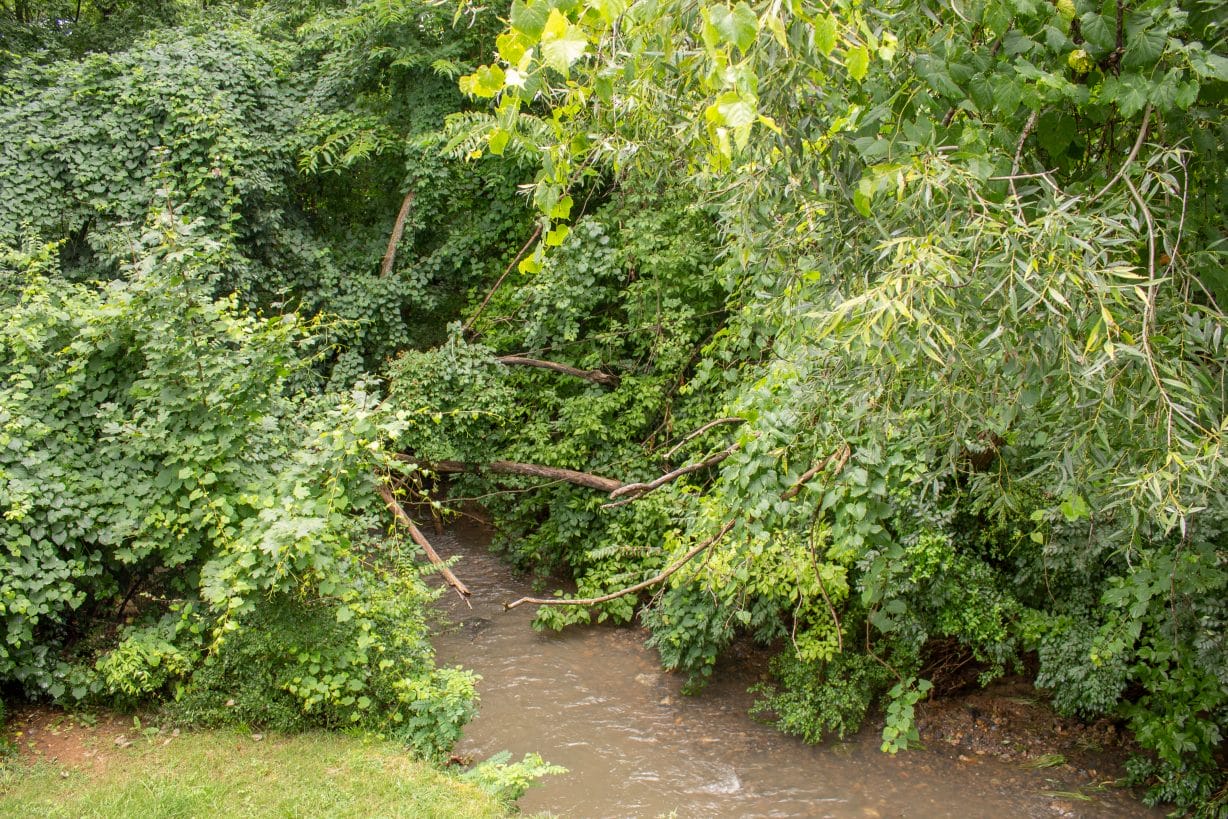
A contributed perspectives piece by the Climate Action Alliance of the Valley (CAAV)
Editor’s Note: This is the latest installment of a regular series of contributed news roundups about statewide environmental and news. This piece highlights, with links to further coverage in various media outlets, recent environmental news stories of significance to Virginia, with a focus on energy and the environment.
Energy
Amherst County joins other Virginia school systems deploying its first electric school buses. Currently, “Virginia is required to follow California EV standard, [and automobile] dealers … [are preparing] for [an] electric future.” “California ban on gas-powered vehicles [by 2035] highlights EV challenges, including affordability.”
Whether or not to allow solar farms, including ones to support large data centers, remains a vexing question for localities like Halifax County, Culpeper County, Patrick County, Prince William County, Pittsylvania County, Hanover County, and Charlotte County. One concern is around disposal of panels at the end of a solar facility’s life.
However illogical it seems on its face, a coal company in Southwest Virginia said the demand for renewable energy means more of a specialized type of coal mining –for thermal or steam coal—needed to make steel. This region is also working hard to develop pathways to renewable energy careers, including around the solar industry, making use of federal money. Virginia Tech scientists are focusing on ways to obtain 17 so-called “rare” earth elements that are actually “relatively abundant in the earth’s crust.” The “scientists are studying methods of extracting critical minerals from tailings [“material left over after separating out the coal”] and another waste product called acid mine drainage. Their aim is to lay out “what could be the groundwork for a new industry.” Passage of the Inflation Reduction Act is expected to facilitate the region’s transition from “coal to green jobs.” Virginia Senator Warner and state and local economic development officials are vying to attract semiconductor chip manufacturing facilities to four Virginia industrial sites as the commonwealth gears up to fight for a piece of the financial pie from sweeping federal legislation that promises to ramp up chip production in the U.S.”
Hydrogen could become an alternative fuel source at some point. “A hydrogen plant could rise near a former King George coal plant.”
There is a federal and regional state initiative to develop regional hubs to serve the growing wind industry and provide a coordinated buildout of its needed infrastructure. “Siemens Gamesa plans to build the first U.S. offshore wind turbine blade factory in Virginia but the first offshore wind projects will have to source turbines and other major components from” elsewhere and there is a competitive need to reduce times to acquire materials for that infrastructure. The State Corporation Commission (SCC) ruled that Dominion Energy will need to cover costs, without holding ratepayers liable, if its off-shore wind project fails to perform at the capacity the company says it will. The SCC has the authority to take this action, according to some experts. For Dominion and its customers and shareholders, the question who will pay for the project. Some believe a more competitive process is needed.
The SCC wants more authority to proactively “protect electric reliability related to plant closures …, a move some environmental lawyers say isn’t a pressing priority.”
There remains opposition to going along with Senator Manchin’s demand that the Mountain Valley Pipeline be completed, including objections by indigenous people and other residents of Appalachia to his recently proposed bill, as well as advocacy groups. House members weighed in. West Virginians are divided. Nonetheless, the Federal Energy Regulatory Commission approved a “stabilization plan” to replace installed pipeline equipment that has aged out. Protesters in Giles County were fined and ordered to do community service after the “Trojan Duck” action against the pipeline.
The Governor is proposing a regulatory action to remove Virginia from the Regional Greenhouse Gas Initiative(RGGI). Some faith leaders want Virginia to remain in the program. Because there is strong opposition to the Governor’s position and efforts around RGGI, there may be legal action ahead. “Legislators [are considering] ways to keep power bills down amid Regional Greenhouse Gas Initiative debate.” A cartoonist expressed his view of the effect of ending RGGI on Virginia’s carbon footprint.
Climate and Environment
An Old Dominion University study said “Unchecked sea level rise would cost Virginia $79 billion this century.” Another study projected “major local tax losses due to sea level rise” for numerous Virginia coastal cities and counties, because of tide lines and current definitions around property lines.
“The Roanoke Valley’s primary supplier of public water took steps Thursday to curtail a contaminant found in the Spring Hollow reservoir and the nearby Roanoke River.” The contaminant is known as “forever chemicals.” “The goal is to limit the spread of GenX, a so-called “forever chemical” that has been detected in both the reservoir and the nearby Roanoke River.” These chemicals have also been found in Chincoteague, located near NASA’s Wallops Island Flight Facility, which has increased the frequency of testing.
Virginia’s two senators “secured $25 million in a budget proposal for imperiled Tangier Island,” but one commentator said the need for action to curb sea level rise suggests this one-off bailout is misplaced. The senators also arranged for $46 million in federal funding to replace lead water pipes in the state. Cedar Island will benefit from federal funding to “restore and expand 217 acres of marsh along the southern part.”
“Virginia’s promise to cut pollution flowing into the Chesapeake Bay is likely to miss its 2025 deadline, and Gov. Glenn Youngkin said speeding up work is a top priority.”
“NOVA Parks adds 44-acre preserve [in Alexandria] to its network of green spaces.”
Indoor vertical farming is becoming more popular and Chesterfield County will soon have one. Herndon has one called “Beanstalk”, as does Pittsylvania County.
ACTION ALERT:
If you are a Harrisonburg resident, please consider attending the October 25 City Council meeting to hear a statement from several local organizations, including CAAV, urging the Council members to take action urgently to reduce the City’s Greenhouse Gas Emissions. Details will be published on social media October 19 or 20.
Check out…
- This upcoming webinar from Virginians for High Speed Rail: Transforming (Intercity & Commuter) Rail Across Virginia – Nov. 1, 2022, 01:00 PM. Register here.
- Virginia Conservation Network’s Education series of webinars about its 2023 “Our Common Agenda.” The Schedule is below. Register here.
- Climate & Energy Week: Oct. 3–7 (webinar 10/6 at 11 AM)
- Clean Water & Flood Resiliency Week: Oct. 10–14 (webinar on 10/13 at 11 AM)
- Land Use & Transportation Week: Oct. 17–21 (webinar on 10/20 at 11 AM)
- Good Governance & Budget Week: Oct. 24–28 (webinar on 10/27 at 11 AM)
- Land & Wildlife Conservation Week: Oct. 31–Nov. 4 (webinar on 11/3, at 11 AM)
- Blue Ridge PRISM’s “Homegrown National Park” webinar with Doug Tallamy, Tuesday, October 18, 11:30 to 1. This presentation will include discussion on how we can regenerate biodiversity in our landscapes. Dr. Tallamy will have a Q&A with the audience at the end of his presentation. Register here for this online event; it’s waitlisted but you can sign up anyway. Those who register will receive access to the recording.
- Blue Ridge PRISM’s fall 2022 newsletter that includes the article “Restore Biodiversity Where You Live” by Natali Walker, with tips by Dr. Tallamy. Find details on his 10 tips, which are:
- Shrink the lawn
- Remove invasive species
- Plant keystone species
- Be generous with your plantings
- Reduce your nighttime light pollution
- Network with neighbors and get on the
- Build a conservation hardscape (you don’t have to be a gardener)
- Create caterpillar pupation sites under your trees
- Do not spray or fertilize
- Educate your neighborhood civic association
- Charlottesville Area Tree Stewards (CATS) Zoom presentation Tree Identification by Season: Fall – Tuesday evening, October 25, 7:00 to 8:30 p.m. Register here. Presenter will be Tree Steward Emily Ferguson for a tour of our fall color palette treat spanning from green through red and discover tips and tricks to help identify common native trees.
- Virginians for High Speed Rail’s Transforming (Intercity & Commuter) Rail Across Virginia – Nov. 1, 1 pm. Learn about the future of rail transportation in Virginia. Register here.
- The state Forestry Department’s online seedling store.
- This guide to finding apples, pumpkins, and corn mazes this fall.
- This article explaining how “xeriscaping” can help you “turn your lawn into a sustainable oasis.”
- Hiking in Roanoke’s Read Mountain preserve, with its recently acquired 56 acres.
Why not…
- Submit an entry for the 2023 Virginia Environmental Film Contest? The contest is open to Virginia filmmakers submitting films on environmental topics focusing on Virginia. A juried panel will select the winning films and announce them on February 15, 2023 on website, RVAEFF.org and through a press release. Prize money will be awarded to the filmmakers as follows: $800 + Laurel Logo – First Place; $100 + Laurel Logo – Best Teen Submission (13-18); $100 + Laurel Logo – Best “Environmental Call to Action.” Entries due November 16 through January 15, 2023 through FilmFreeway, a website where filmmakers submit their films to hundreds of film festivals. Find full details regarding contest rules and deadlines and how to submit your film here. Selected winners will be shown March 18, 2023 (tentative) at The Byrd Theatre. Admission to the festival is free and open to the public. More information on the festival can be found here. For questions specific to the Film Contest, email: rvaenvfilmfest@gmail.com.
- Turn out your outdoor lights during October and November? This is migration time for many birds, including songbirds. Light pollution disrupts their navigation systems and too many die because of light reflection.
- Order the 2023 Sierra Club Wall ($14.95) or Engagement ($15.95) Calendar? Sales proceeds directly benefit the Piedmont Group’s activities. To order, contact Audrey at aadann@gmail.com.
- Use the Virginia Department of Forestry’s Fall Foliage Driving Tour Maps and see the changed and changing leaf colors in our area?
- Listen to the Garden Club of Virginia’s Annual Conservation Forum about the dangerous chemicals called “per- and polyfluoroalkyl substances” (PFAS)? The webinar will happen Nov 3rd from 9am – 12pm, is free and open to the public, but you must register here.
- Watch this video article “Searching for the source of Spring Hollow reservoir’s ‘forever chemicals’ | A1 Extra”?
- Do some hiking this fall? Try Turkey Run Loop Trail (McLean), Little Stony Man in the SNP, and/or Kennedy Peak along the Massanutten Mountain Trail in the George Washington National Forest (near Luray)?
- “Save seeds now for next year’s garden flowers”?
- Learn how you can weigh in during Rockingham County’s Comprehensive Plan development process?
The Climate Action Alliance of the Valley (CAAV) is a non-profit, grassroots group in the Central Shenandoah Valley that educates legislators and the public about the implications of the Earth’s worsening climate crisis.

